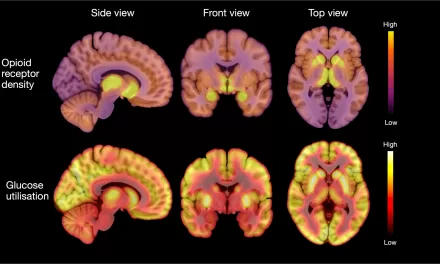Scientists have long sought to unravel the mysteries of the human brain by comparing it to those of our primate relatives, monkeys and apes. A new study, published in the Journal of Neuroscience, has taken a novel approach by examining the internal connectivity of the brain, potentially bringing us closer to understanding what truly sets our cognitive powerhouse apart.
For years, research has largely focused on the size of the brain or its different regions. However, this new study emphasizes that internal organization, specifically the communication pathways between different brain areas, may be more telling. Researchers analyzed publicly available MRI data of white matter – the fibers that connect various parts of the brain’s cortex, facilitating communication between brain cells.
The study compared the connectivity fingerprints of different brain regions in humans, chimpanzees (our closest living relatives), and macaque monkeys (a well-studied non-human primate). This allowed the scientists to identify brain regions and connections unique to humans as well as those shared with our evolutionary cousins.
While previous research often highlighted the prefrontal cortex, the area associated with complex thought and decision-making, as a key differentiator, this study revealed that the most significant differences lie in the temporal lobe, located behind the ear. This region is primarily involved in processing sensory information, particularly vision and hearing.
One striking finding centered on the arcuate fasciculus, a white matter tract connecting the frontal and temporal cortices. While this tract exists in other primates, it is considerably larger in humans and traditionally linked to language processing. However, the study suggests its role might be broader, encompassing the integration of sensory information and the processing of complex social behavior. This indicates that the evolution of human cognitive abilities likely involved multiple interconnected changes rather than a single defining event.
Furthermore, the researchers found distinct differences in the temporoparietal junction, a region crucial for understanding others’ beliefs and intentions – a fundamental aspect of human social interaction. In humans, this area exhibits far more extensive connections to brain regions involved in processing complex visual information, such as facial expressions and behavioral cues. This suggests that the human brain is uniquely wired for intricate social processing.
The findings challenge the notion of a singular evolutionary leap responsible for human intelligence. Instead, the study proposes a step-wise evolution, with changes occurring in the frontal cortex in apes followed by significant modifications in the temporal cortex along the lineage leading to humans.
While the Victorian paleontologist Richard Owen was incorrect in his assertion about the hippocampus minor as the sole unique feature of the human brain, this study confirms that our brains are indeed distinct. We share a fundamental primate brain structure, but the way our brains are interconnected appears to have evolved to support our advanced social capabilities and language.
Disclaimer: This news article is based on a press release regarding a study published in The Journal of Neuroscience. Further research and peer review are necessary to fully validate these findings.(https://medicalxpress.com/news/2025-03-human-brain-unique-monkeys-apes.html)












